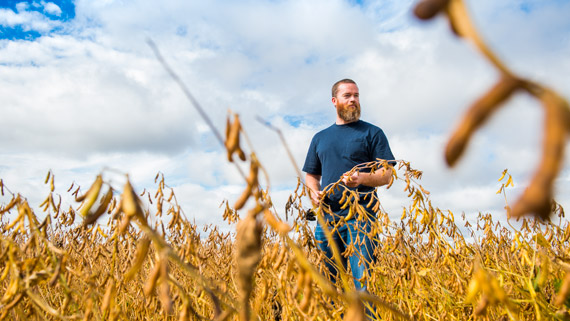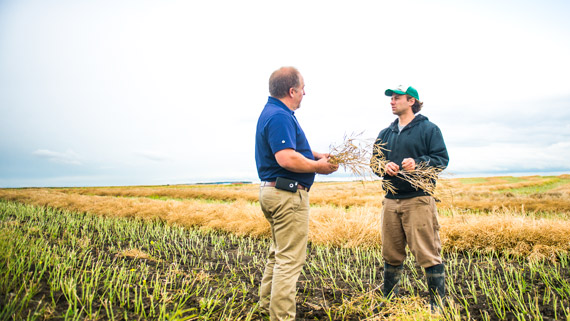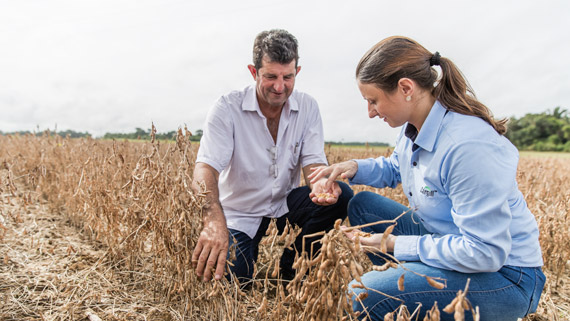Scenes that dominated the headlines this past summer: heat waves across the pacific northwest, wildfires in Greece, and super cyclones in the Asia-pacific are somber reminders that our climate is in crisis. The resources that sustain us all- our drinking water, our forests, and the very land itself must be protected. It is essential that we commit to using our finite resources sustainably.
A false dichotomy has persisted: that economic interests and environmental interests are always in conflict. The reality is that the mechanisms to cultivate sustainable management of our resources have caught up with the calls for action. A growing world population must be fed. A vital farm economy supports global trade and builds resilient markets and communities around the world. But those efforts no longer have to be at the expense of our planet.
Pundits, researchers, and scholars alike have spoken about the importance of decision-making structures, policies and governments as the vanguard of sustainable land management. Now corporations are also stepping up to the call for change, bridging the gap by funding visible, transparent supply chain innovations to preserve our natural resources, whether that is protecting forests and grasslands, restoring previously degraded lands or regenerating soil.
Where does this commitment to change start?
While there is no one solution for sustaining our land and protecting our climate, there is hope.
The very people who farm the land to feed the world are also ardent land protectors. Practices being undertaken across supply chains and geographies are showing how agriculture is not only part of the solution, but is the key to a more sustainable, resilient global food system that is less reliant on diminishing natural resources.
 Robert Horster, Global Sustainability Lead at Cargill believes change starts at the farm.
Robert Horster, Global Sustainability Lead at Cargill believes change starts at the farm.
“Without farmer engagement, the supply chain won’t change. With the realities of climate change and biodiversity loss threatening us all, we believe it’s our responsibility to actively support farmers, the true stewards of the earth. That is where the capability sits, to drive real change at the very start of the food system”.
In working with farmers to advance regenerative agriculture practices, Mr. Horster explains how Cargill is taking the lead to standardize the practice.
 “Cargill’s regenerative agriculture program pays farmers for improved soil health and positive environmental outcomes, including payment per metric ton of carbon sequestered. The program connects farmers to the growing carbon marketplace and will help scale the voluntary adoption of regenerative agriculture practices across 10 million acres of row crop farmland by 2030”.
“Cargill’s regenerative agriculture program pays farmers for improved soil health and positive environmental outcomes, including payment per metric ton of carbon sequestered. The program connects farmers to the growing carbon marketplace and will help scale the voluntary adoption of regenerative agriculture practices across 10 million acres of row crop farmland by 2030”.
Initiatives such as this are a realization of the potential that sustainable agriculture has in ensuring our coexistence with nature itself.
However, while the farmer is central to changing the existing system, long-term, transformational change requires collective action focused on protecting and restoring the land not only today, but for future generations. As a living, breathing ecosystem, land does more than simply provide nutrients for plant growth. It pulls carbon from the atmosphere, improves water quality and provides drought resistance.
Cargill’s efforts in these areas have already borne fruit. The organisation has implemented programs across palm, soy and cocoa, driving towards supply chains with zero deforestation. Furthermore, the company is investing in the future of the planet through landscape restoration, planting more than half a million trees in Côte d’Ivoire, and forming a partnership with the World Resources Institute in South America and the Caribbean on the productive restoration of 500,000 hectares by 2025.
 As Mr. Horster emphasizes,
As Mr. Horster emphasizes,
“We know that making a difference for the future of the planet is something we have to earn through action. We sit at the center of the food system. It is our responsibility to bring the long-term view and actively support solutions designed to help protect, regenerate and restore our most vital resources.”
It is clear that the path towards sustainable land management is not one that any single region, company, or individual can walk down alone. To secure a sustainable future built upon restorative and innovative practices, all stakeholders must come to the table. For Cargill, farmers, and civil society, the value of being keepers of the land is priceless. Mr. Horster’s words summarize the agenda moving forward:
“The land nourishes us, so we must nourish the land in return.”

